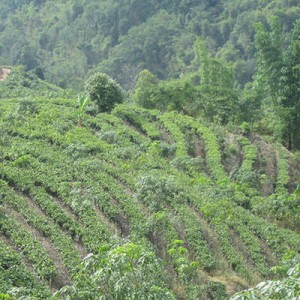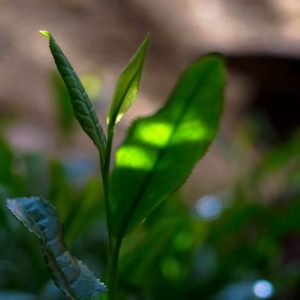Home › Dialogues › Tea Reviews › Oriental Beauty vs Imperial Topaz
Tagged: black tea, definition, Imperial Topaz, oolong, Oriental Beauty
- This topic has 6 replies, 5 voices, and was last updated 6 years, 3 months ago by
Longjing 43.
-
AuthorPosts
-
-
2017.06.11 at 11:50 pm #14864
Manila Tran
ParticipantBoth are very delcious tea although I prefer Oriental Beauty if when I have a choice. My question is something else. If Oriental Beauty is a oolong and Imperial Topaz is a black tea, why does the oolong more oxidized than the black tea?
I inspected the infusd leaves of both teas side by side and surprised to find the color change in the Taiwan oolong leaves a lot more than the Nepal black tea.
Why is Oriental Beauty not a black tea, or Imperial Topaz not an oolong?
-
2017.06.12 at 11:35 pm #14865
Siu PB
ParticipantHi ‘Manila’,
I am happy that you posted the question here at Tea Guardian. I know this is very confusing. Tea categorisation really should be easier to understand. I shall talk to Leo about this same question which has been asked a few times before you did. Hopefully he will write more to clarify that.
As for why Oriental Beauty is an oolong, it is really a complete oolong process and beyond. The oxidation in our selection is deeper than some others but not unusual. A complete oolong process is composed of withering under the sun, shading to regain water, rattling the leaves before oxidation, repeating the process, killing green, rolling, resting and baking dry. In black tea processing, such as that for Imperial Topaz from the Himalayas, the oolong steps are omitted and only the shorter black tea steps make the tea. You can see the comparison in Leo’s articles in:
The degree of oxidation in black tea production varies from very light, like in Himalayan Finest Flowery, or some Darjeeling, to very thorough, like in Red Plum Classic or Dianhong Golden.
So the process determines the category, not the degree of oxidation.
Hopefully that clarifies it and you enjoy either tea without the puzzle!
-
This reply was modified 6 years, 10 months ago by
Siu PB.
-
This reply was modified 6 years, 10 months ago by
 Tea Guardian.
Tea Guardian.
-
This reply was modified 6 years, 10 months ago by
 Tea Guardian.
Tea Guardian.
-
This reply was modified 6 years, 10 months ago by
-
2017.06.17 at 12:57 am #14872
Manila Tran
ParticipantHi Siu, Thank you for the answer. It is somewhat funny to be talking with you here, but I think I like it.
I did read the two articles you shared, but I have the impression that a black tea is thoroughly oxidized. Darjeeling is always an exception. I don’t know why I thought that.
I think perhaps Leo should write another article in detail to point it out.
That Oriental Beauty is really fascinating. The more I drink it, the more I discover its complexity. Thank you.
-
2017.06.20 at 10:36 am #14883
Longjing 43
ParticipantBoth are excellent teas. I much prefer OB too!
-
2017.07.07 at 12:04 am #14903
Hokusai
ParticipantI bought Imperial Topaz from Tea Hong after seeing this post. It tastes very good. I like it but not as much as good Oriental Beauty.
-
2017.12.27 at 11:16 pm #15108
Jan
ParticipantThe differences between a “Black tea” and a “Oolong” are much more than simply the degree of oxidation. In this argument I am using the term Oolong as a synonym for Oriental Beauty:
In my opinion the most important are the commonly practised processing steps.
There is the rather standard way of making a black tea the “British Style”: withering-rolling-fermenting-drying. However, as mentioned in an earlier post, Darjeeling First Flush is also oxidized only 45mins and sold as a black tea even though the greenish appearance and grassy Cup. Technically this tea could now be called Oolong because it is indeed not fully oxidized. But hence the processing steps are the same as for Black Tea (no killing green) it is in fact not being called Oolong.
Once the planters of Darjeeling use small rollers (imported from China/Taiwan) and invest lots of manual work in order to make small batches of curly-shaped teas, therefore following still similar production steps but in a smaller scale, very freely the tag “Oolong” will be given to that batch. The same thing happens in Nepal. This is also being done in order to receive higher sales Prices in Export (Both countries are exported-oriented when it comes to high quality). Any tea that carries the name Oolong simply sounds fancy and made with utmost care, etc…
Secondly the cultivar is an essential factor of making Oolong. The Nepal Topaz is indeed made in a traditional fashion and follows the steps of Oolong-making, but I am convinced that Nepal does in fact not have so much Wulong-cultivars but rather go for Sinensis in highgrown areas and Assamica-cultivars in lower elevations. Some (organic) gardens are experimenting with Yabukita, TieGuanYin, etc. but that is still considered to be experimental. -
2017.12.31 at 6:57 pm #15112
Longjing 43
ParticipantI doubt this Imperial Topaz follows traditional oolong processing. Also Darjeeling teas are not oolongs at all. They are just lightly oxidized black tea. Detail explanation of the difference already covered in Leo’s writing in this site.
-
-
AuthorPosts
- You must be logged in to reply to this topic.










